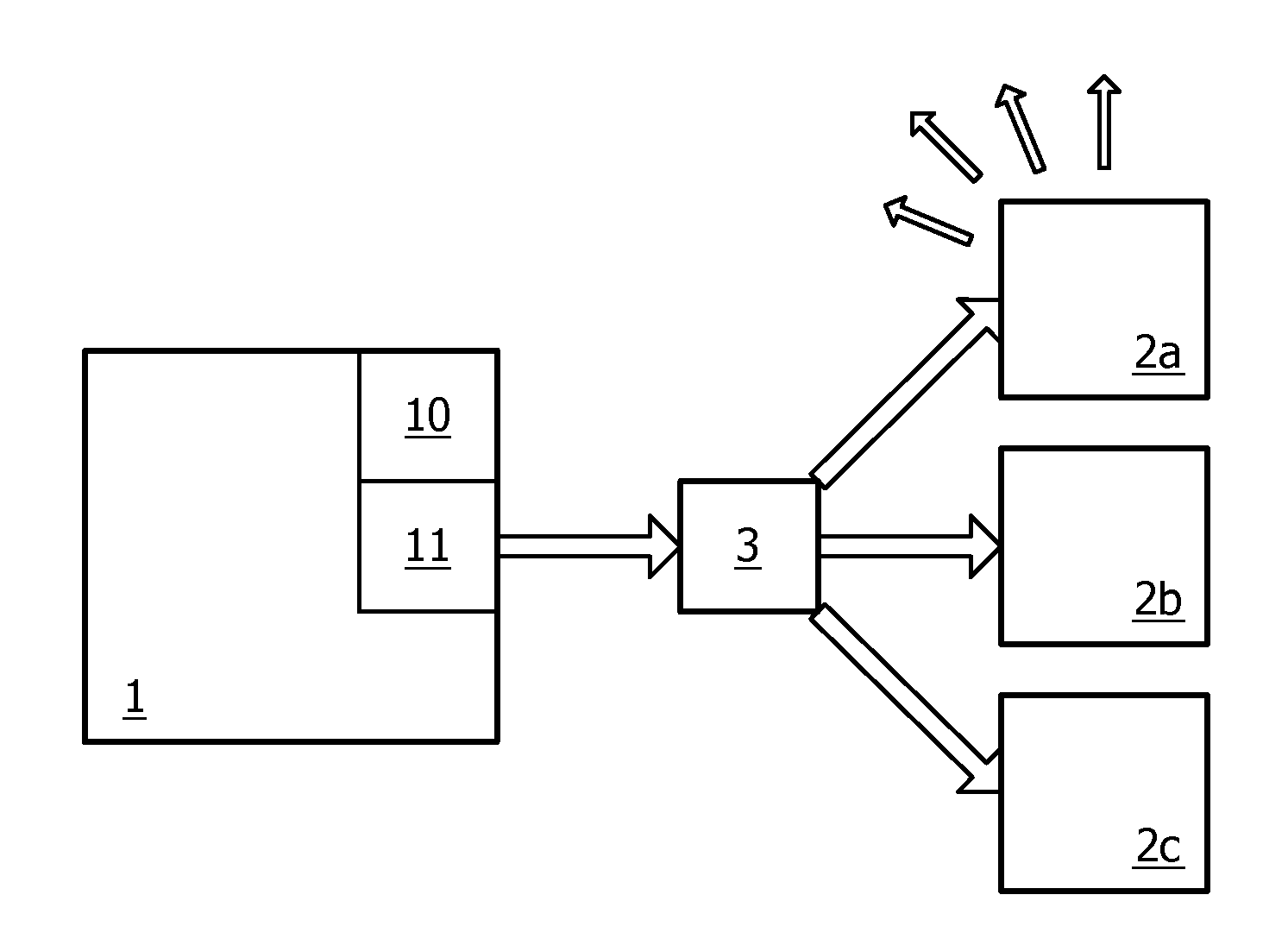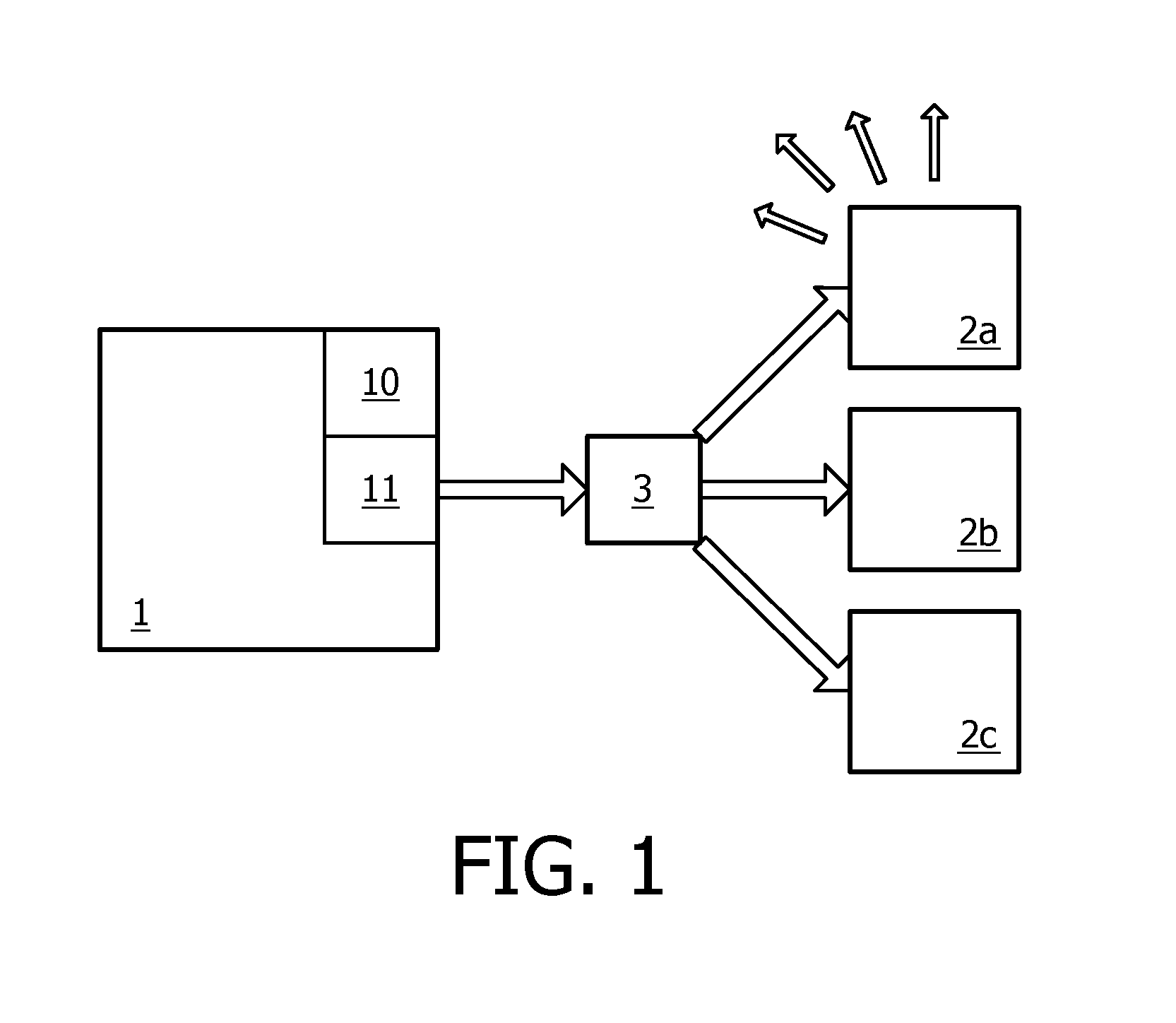Method for controlling transmissions from a resource-restricted device, and batteryless device
a technology of resource restriction and transmission, applied in the direction of electric controllers, data switching networks, high-level techniques, etc., can solve the problems reduced device life, labour-intensive battery replacement, etc., and achieve the effect of low leakage curren
- Summary
- Abstract
- Description
- Claims
- Application Information
AI Technical Summary
Benefits of technology
Problems solved by technology
Method used
Image
Examples
Embodiment Construction
[0029]The present invention relates to a method for controlling transmissions from a batteryless device 1 as shown in FIG. 1. The batteryless device 1 sends frames intended for controlled devices 2a, 2b, 2c. These transmissions are handled via a proxy device 3, receiving frames sent by the batteryless device 1 and forwarding them to the relevant destination device or group of devices, using unicast, multicast or broadcast transmission, whichever is provided by the wireless communication standard and chosen in the configuration step.
[0030]For correct operation of the present method, the batteryless device 1 is situated in physical proximity of the controlled devices 2a, 2b, 2c. This allows the batteryless device 1 to passively receive out-of-band feedback on the frames sent to the proxy device. Actually, a method according to the invention is to be applied in networks where the batteryless device 1 controls devices 2a, 2b and 2c that influence a physical phenomenon.
[0031]In the first...
PUM
 Login to View More
Login to View More Abstract
Description
Claims
Application Information
 Login to View More
Login to View More - R&D
- Intellectual Property
- Life Sciences
- Materials
- Tech Scout
- Unparalleled Data Quality
- Higher Quality Content
- 60% Fewer Hallucinations
Browse by: Latest US Patents, China's latest patents, Technical Efficacy Thesaurus, Application Domain, Technology Topic, Popular Technical Reports.
© 2025 PatSnap. All rights reserved.Legal|Privacy policy|Modern Slavery Act Transparency Statement|Sitemap|About US| Contact US: help@patsnap.com


